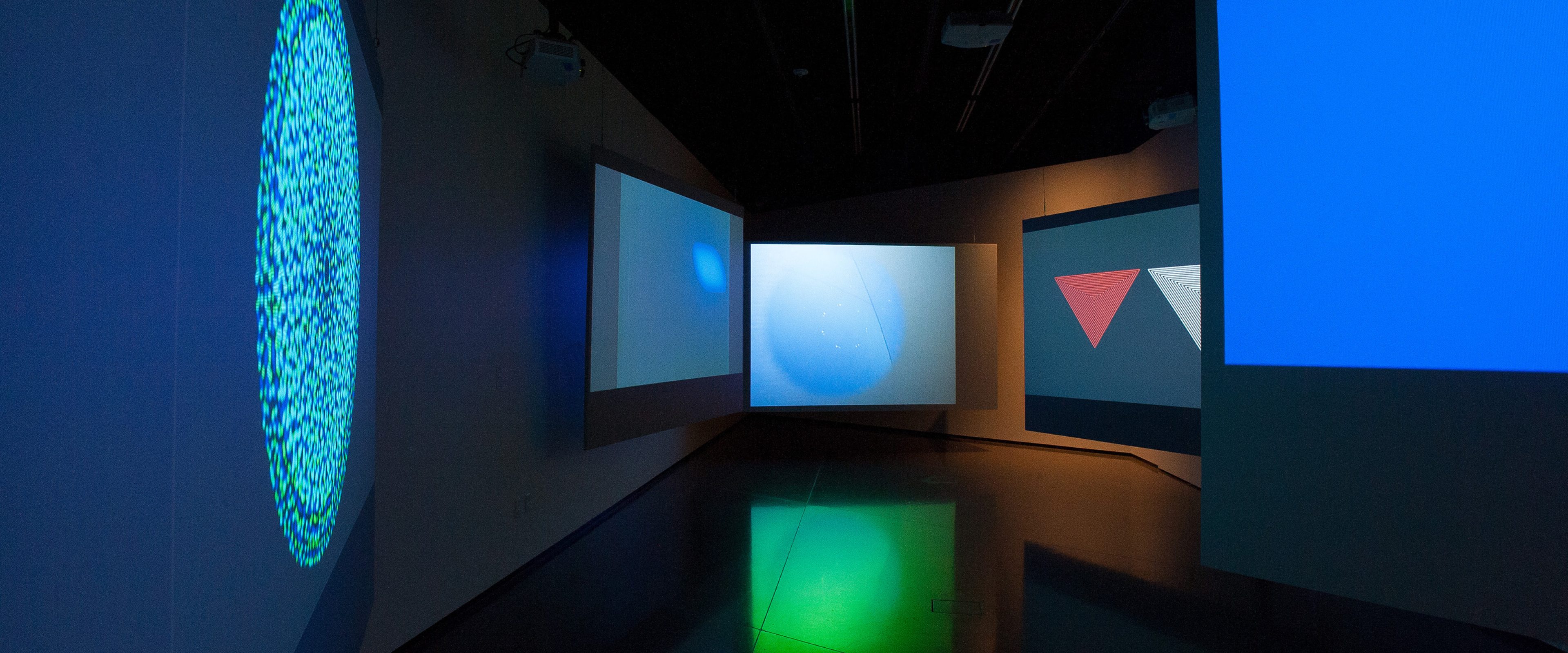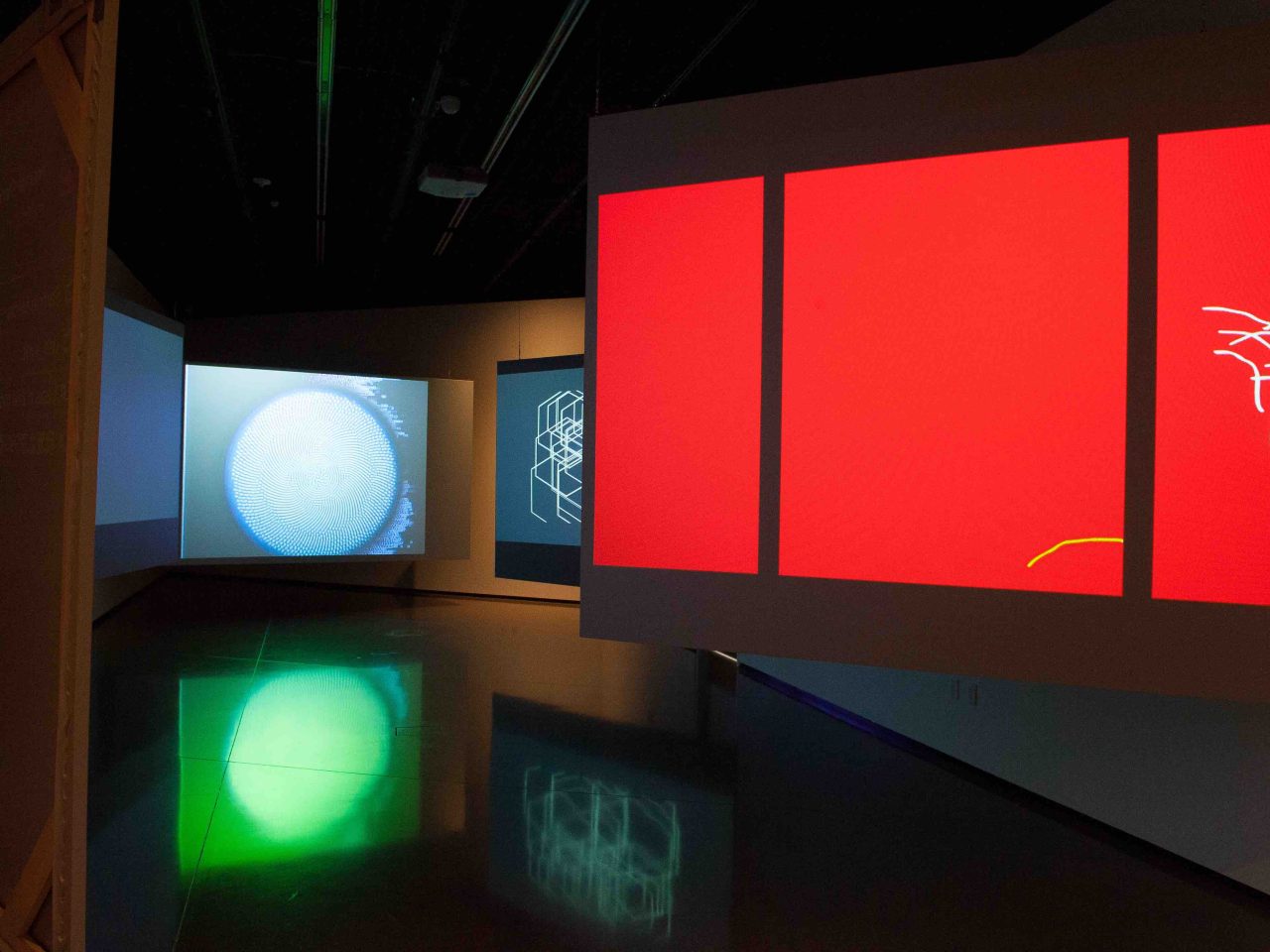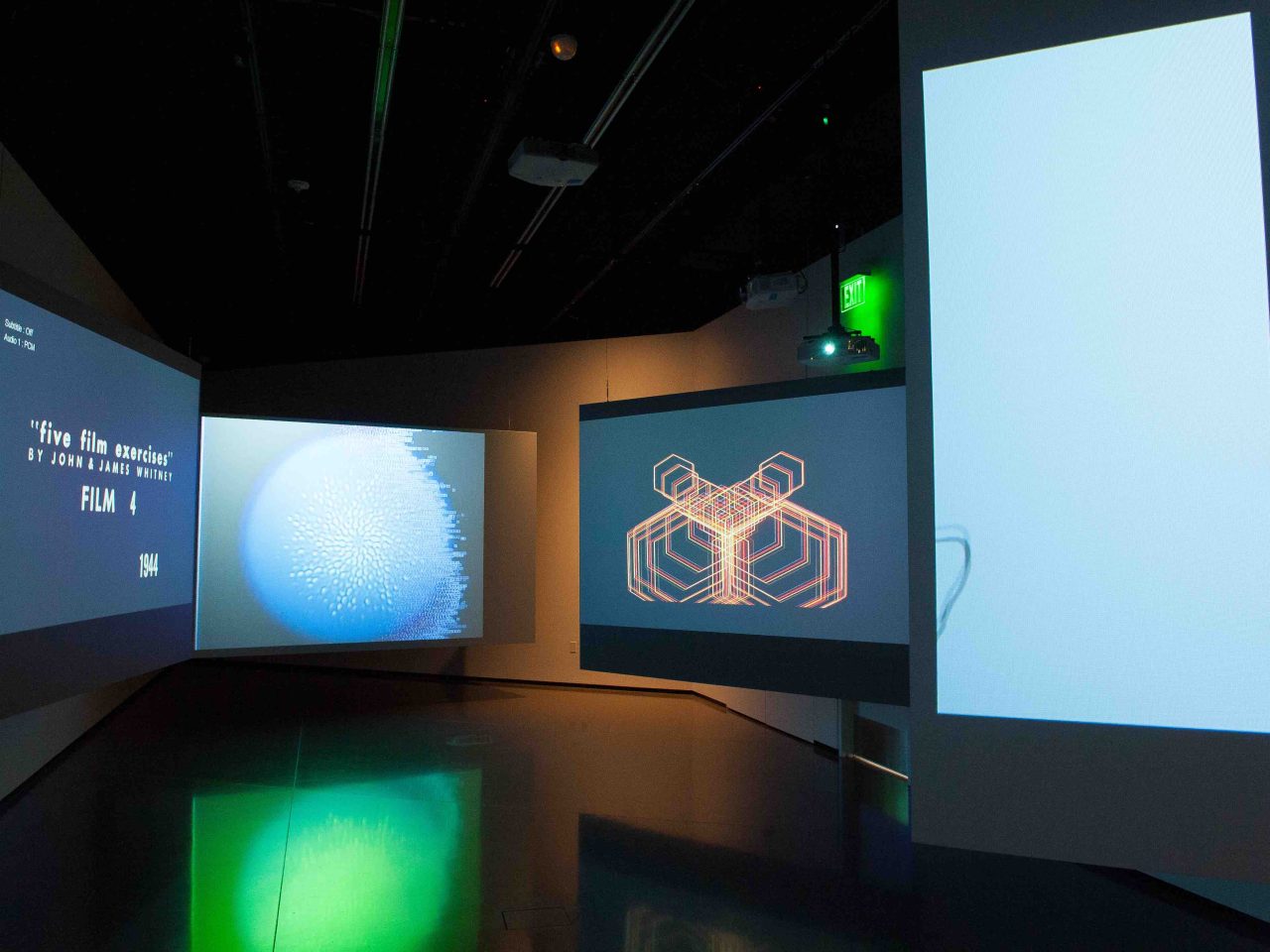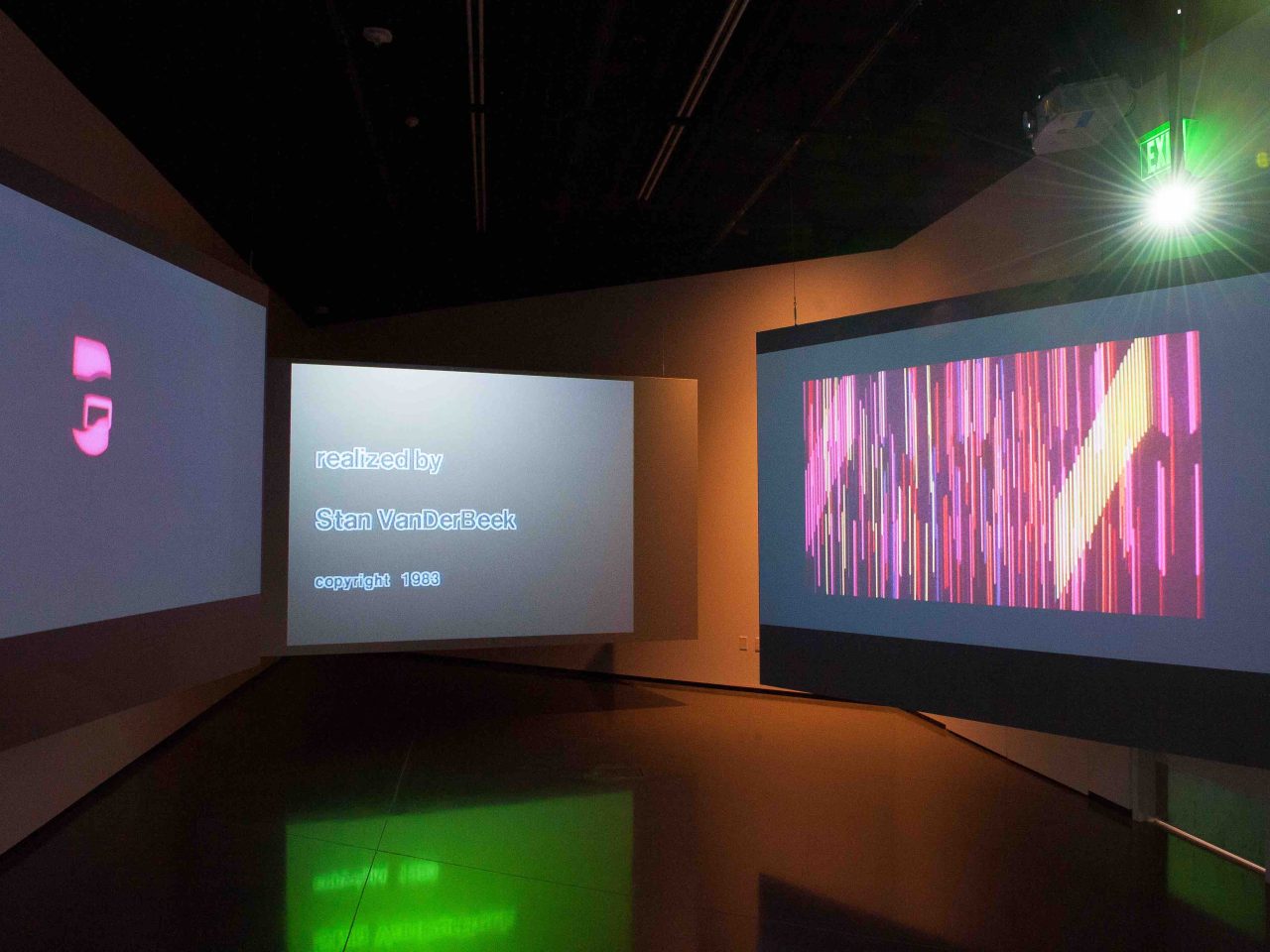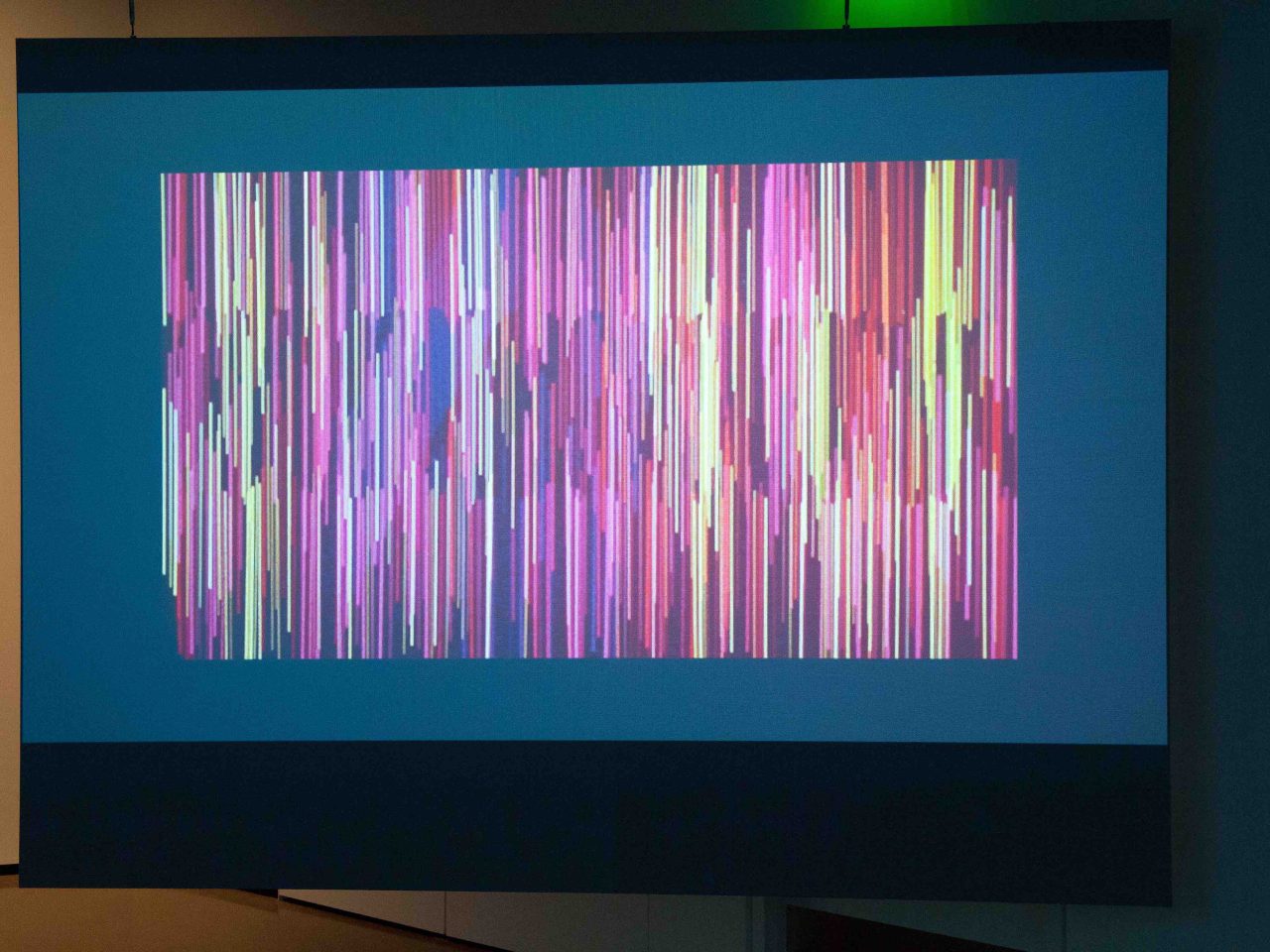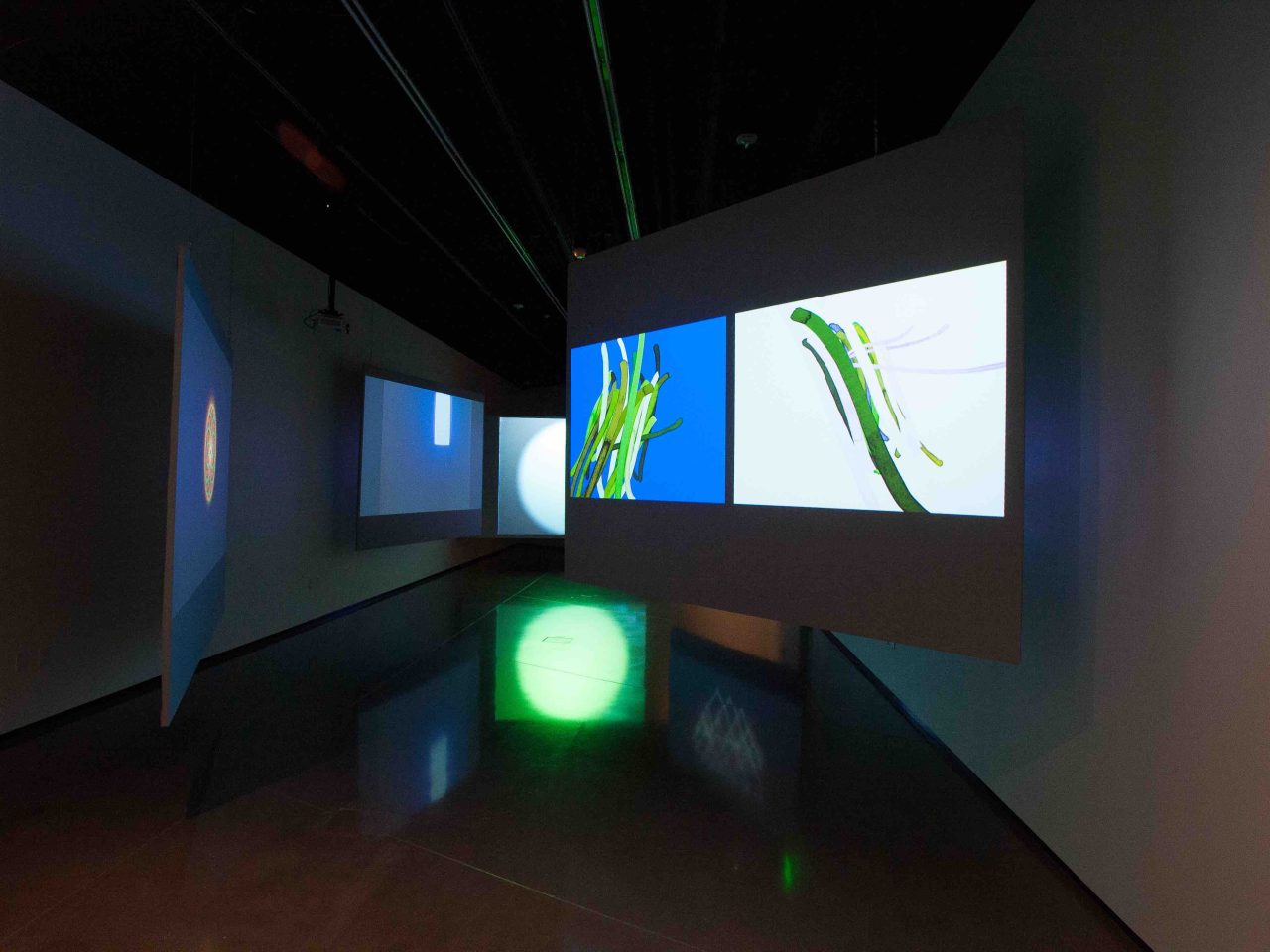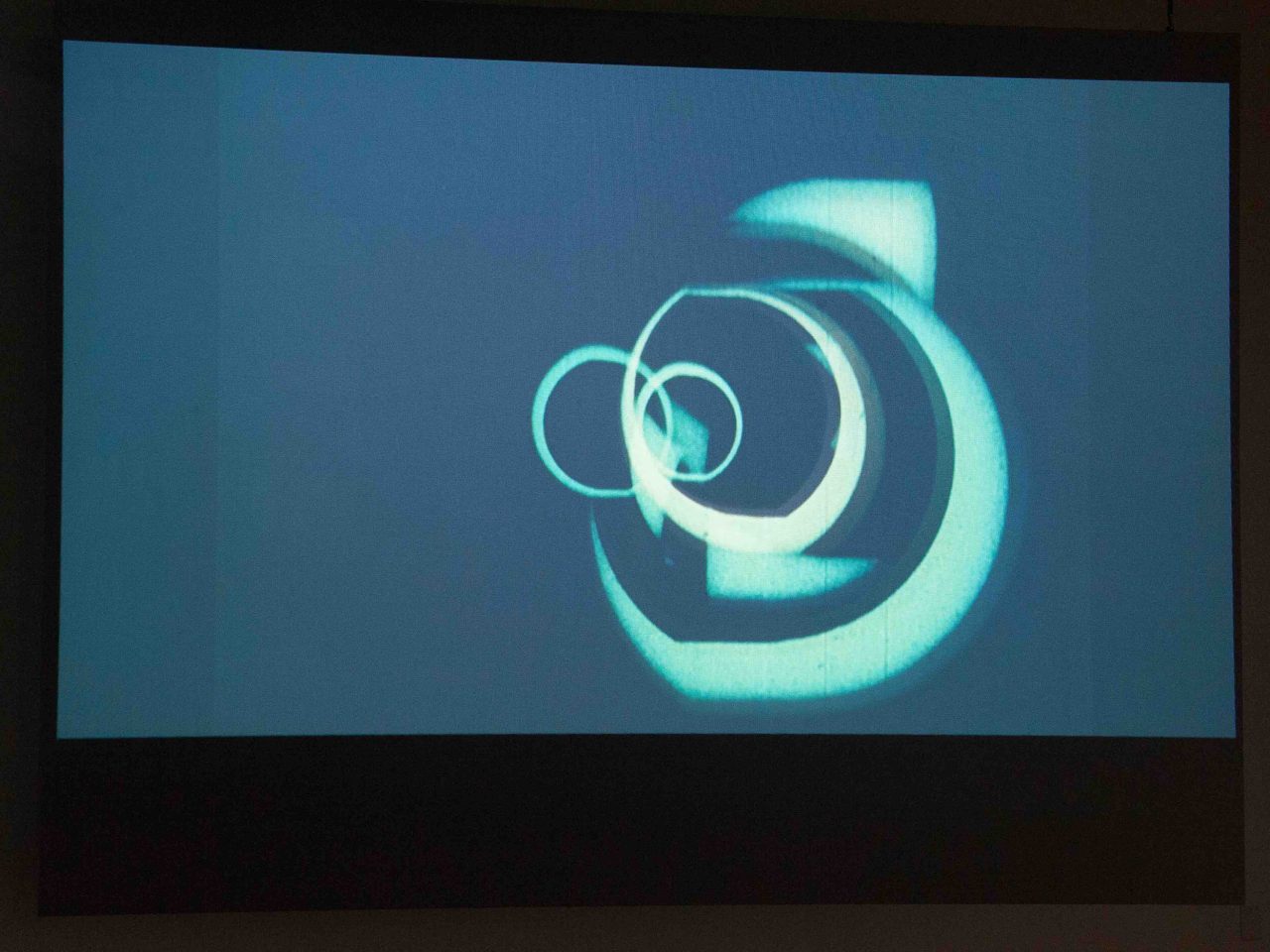Variations on a Line (Moving) is organized by the Eli and Edythe Broad Art Museum at Michigan State University and curated by Michael Rush, Founding Director. Generous support is provided by MSU Federal Credit Union. Additional funding is provided by the MSU Broad’s general exhibitions fund.
About the Exhibition
The use of “patterns” has a long history in moving image art, predating Minimalism and other expressions of repetition, including performance. Duchamp’s first foray into film, Anemic Cinema (1926) is a dizzying series of rotating discs, crosscut with nine nonsensical phrases reflecting the artist’s propensity for puns. The optical repetitions and manipulations are hypnotic. In the mid-twentieth century, Japanese avant-garde painter and performer, Shimamoto Shozo, used found film footage in his film Work (1958) to make what he called a “direct animation.” He poured vinegar on the original stock, then mixed and remixed images in such a way as to question the very nature of the moving image. Film, after all, is a pastiche of second-by-second movements edited together to look as if the movements are continuous. The mainstay of American avant-garde cinema, Structuralism, is itself an ongoing examination of patterning: image after image (most often abstract) repeated and reworked endlessly (as in the work of Stan Brakhage) to create a demystified cinema that really is nothing more than its constituent parts, thus eliminating any of the “emotionalism” of narrative cinema.
In Variations on a Line (Moving), a title borrowed from an early film by John Whitney, four artists from different historical periods demonstrate the mesmerizing as well as beautiful aspects of abstract patterning in moving image art.
